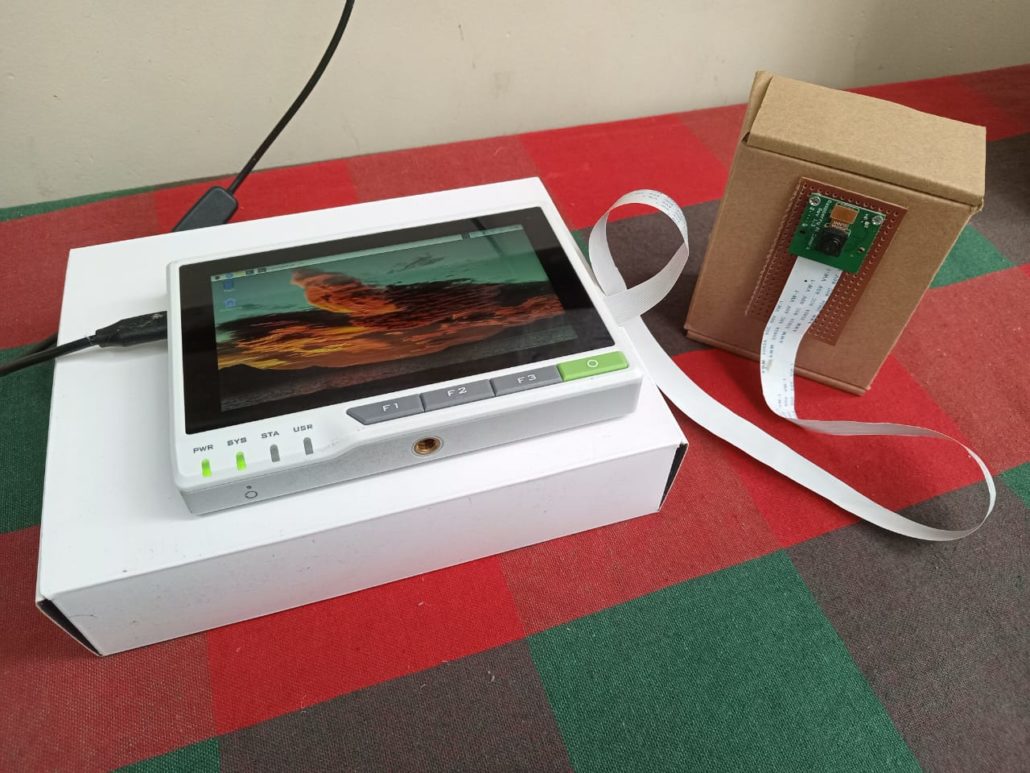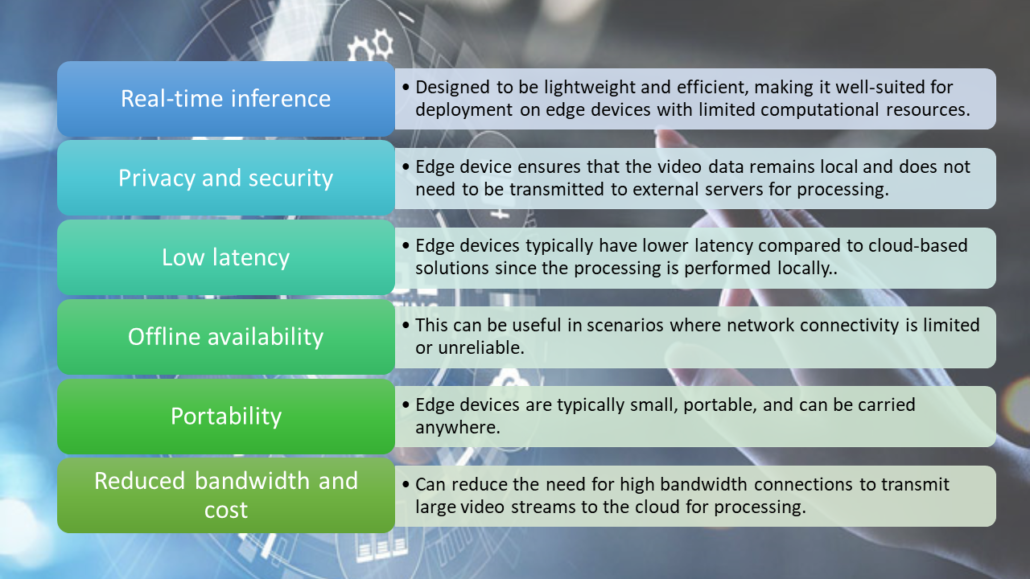Background
In today’s fast-paced and interconnected world, understanding human activities has become increasingly crucial across various domains. From healthcare and fitness to robotics and augmented reality, the ability to accurately identify and classify human activities in real-time has immense potential for transformative applications. Traditionally, such tasks were performed on powerful servers or cloud-based platforms, often posing challenges related to privacy, latency, and resource constraints. In this blog, we delve into the importance of identifying human activities using video classification at the edge, exploring the benefits, applications, and the potential impact on various industries.

MoveNet
MoveNet is a computer vision model developed by Google that focuses on human pose estimation. It can accurately estimate the poses of humans in images and videos. While MoveNet is primarily designed for pose estimation, it can be utilized as a feature extractor for video classification tasks involving human actions or movements. By extracting pose information from each frame of a video using MoveNet, you can represent the motion and spatial relationships of key body joints over time, which can then be used as input for a video classification model.
Creating a MoveNet model on an edge device, such as a mobile device or an embedded system, can offer several advantages.

reTerminal
With the rise of edge computing, the reTerminal device by Seeed Studio emerges as a game-changer in the world of Human-Machine Interface (HMI) devices. Offering a future-ready solution, reTerminal seamlessly integrates with IoT and cloud systems, unlocking endless possibilities for edge computing applications. When combined with the exceptional capabilities of MoveNet, the impact is truly transformative. Powered by the Raspberry Pi Compute Module 4 (CM4), reTerminal boasts a Quad-Core Cortex-A72 CPU clocked at 1.5GHz, providing substantial processing power for demanding tasks. Its 5-inch IPS capacitive multi-touch screen with a resolution of 1280 x 720 ensures a vibrant and interactive display. Equipped with 4GB of RAM, reTerminal enables efficient multitasking, while the generous 32GB of eMMC storage allows for quick boot times and a smooth user experience. Leveraging these impressive features, deploying MoveNet at the edge becomes an ideal choice.
Edge-specific Applications
The combination of MoveNet and video classification on the edge can enable innovative projects that revolutionize various domains. Here are a few examples:
- Human activity recognition: By utilizing MoveNet for video classification, you can build applications that automatically recognize and classify human activities in real-time, such as sports analysis, fitness coaching, or gesture-based interfaces.
- Augmented reality (AR): MoveNet can be used in AR applications to track and classify human poses or gestures, enabling interactive and immersive experiences that respond to users’ movements in real-time.
- Robotics: MoveNet-based video classification on edge devices can facilitate robots in understanding and interpreting human actions, leading to improved human-robot interaction, gesture-based control, or even robot-assisted therapy.
- Assistive technologies: Edge-based video classification using MoveNet can power assistive technologies for people with disabilities, enabling applications such as sign language recognition, motion-based control systems, or fall detection systems.
Conclusion
In conclusion, the convergence of reTerminal and video classification at the edge opens up a world of opportunities and advancements in diverse domains. With reTerminal’s future-ready HMI device, powered by the Raspberry Pi Compute Module 4, and its impressive processing power, vibrant display, and ample memory, the stage is set for seamless deployment of video classification models like MoveNet. By harnessing the capabilities of reTerminal, organizations and developers can bring real-time video classification directly to the edge, enabling enhanced privacy, low latency, and efficient resource utilization. From robotics and AR to healthcare and security, the integration of reTerminal and video classification empowers innovative applications that revolutionize the way we interact with technology. With the ability to analyze and recognize human activities in real-time, edge devices equipped with video classification capabilities are poised to unlock new levels of automation, personalization, and safety.
